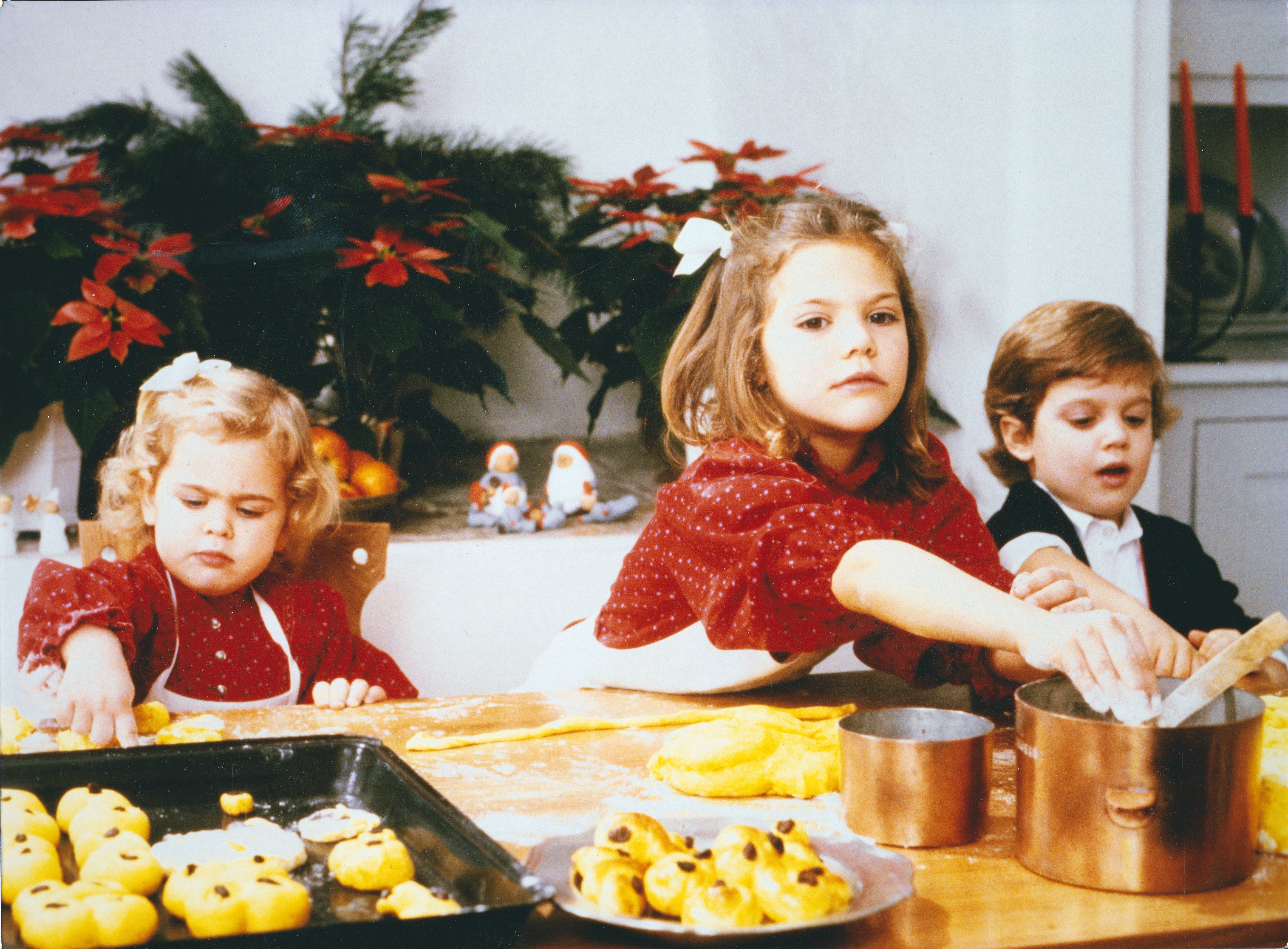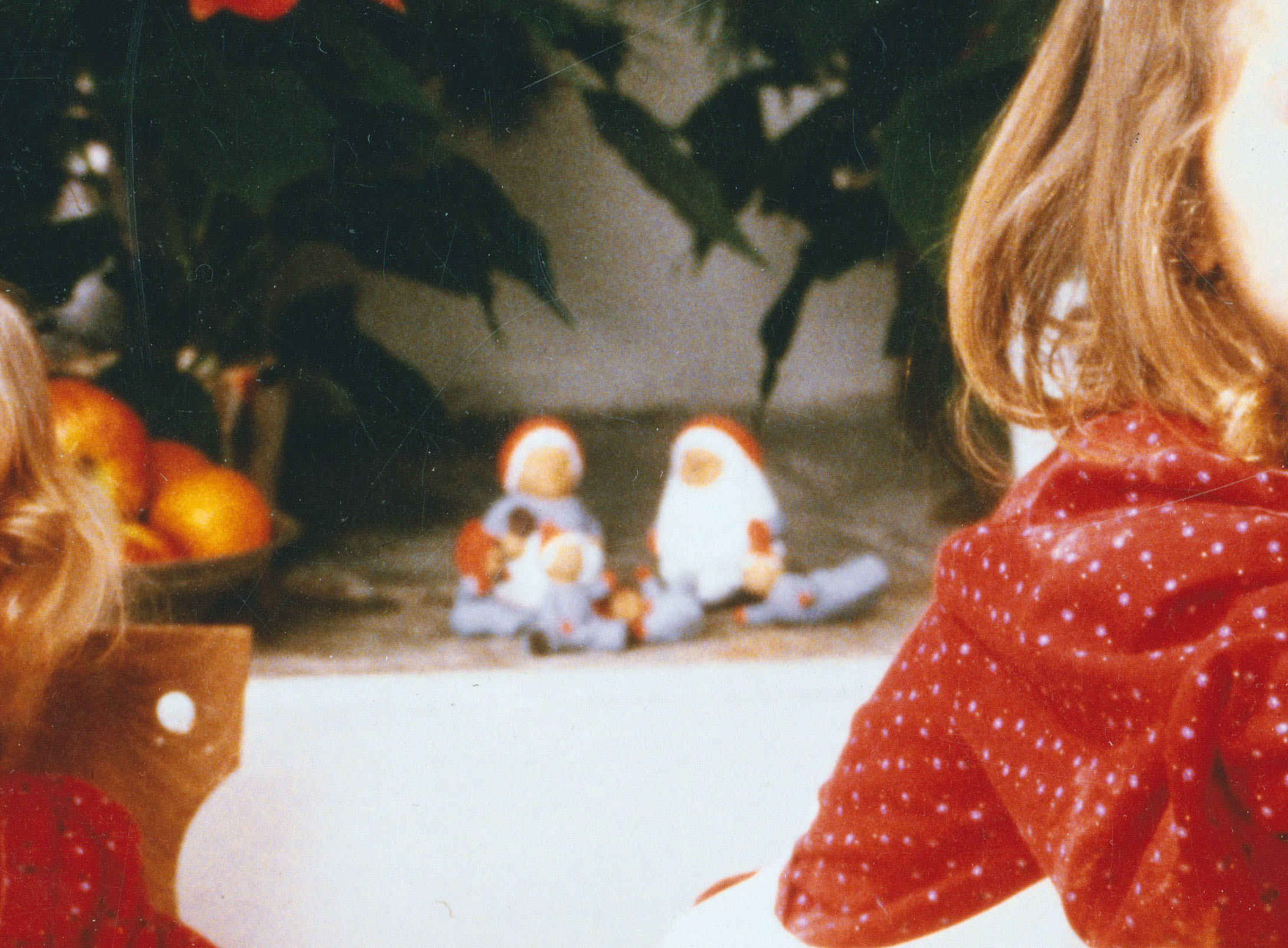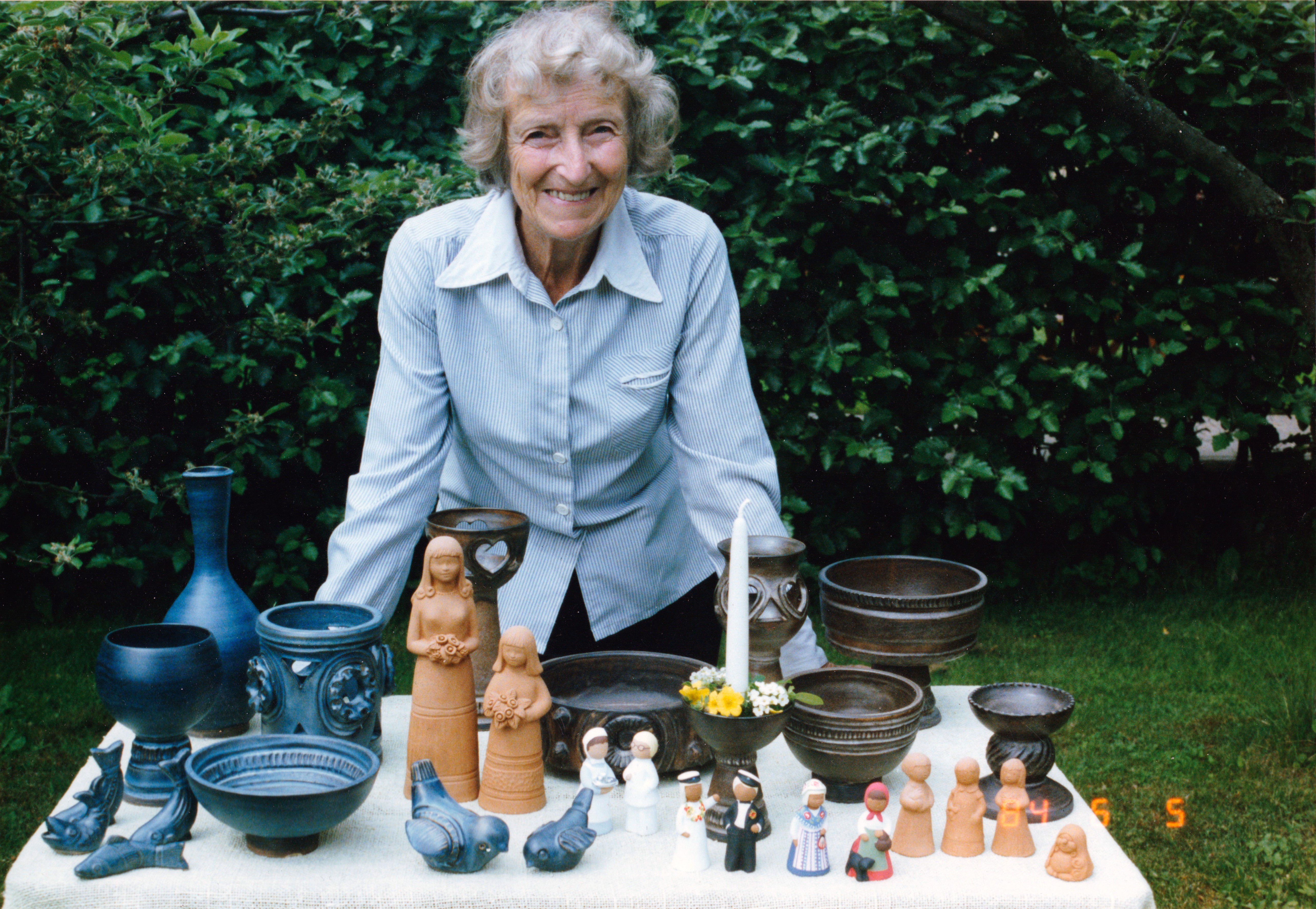About Us
Yourstone Keramik (Yourstone Ceramics) started in 1942 in Huddinge, just outside Stockholm, by my parents Irma and Henry Yourstone, and my mother soon became a well-known ceramic designer. I took over the company in 1985 and in connection with that I decided to stop turning ceramics and focus on handmade ceramic figurines. Irma Yourstone has created our ceramic style which is characterized by simplicity and purity in form and a sense of style and tradition.
In the summer of 2007 I became a national pensioner, but did not quit the company because of that. However, it did require some changes, such as reducing the assortment and closing the shop at Bankgatan. Today, sales instead take place before Christmas in the small dovetailed cabin “Tomtebo” at Lilla Torg in Halmstad, Sweden. For more information and opening hours, please visit our Contact page.
Collecting the tomte (gnome) family has become very popular with our customers. I usually say that the Yourstone family is the third generation of craftsmen who manufacture and sell to the fourth generation of customers.
Our Workshop
Our craftsmanship is carried out today in much the same way as it has been done for a few thousand years and is thus a living part of our cultural heritage.
1. Based on a model of ceramic clay, an original mold is made. From this, a working mold (see picture!) is made. Then you press clay into the working mold.
2. The figurine is then retouched and decorated.
3. After drying and firing the figurines, the painting work takes place. Ulla Yourstone created a uniform color scheme for tempera color with 90 different shades, a laborious work which took a lot of time.
Irma Yourstone
When the movie crew Zvision from Halmstad were going to film the actual craft in Yourstone Keramik 2015, it was done in interview form. One of the interviewer’s first questions was: “What is your biggest boast of Yourstone Keramik?”. Oh, I thought, what a difficult question! But then I came to think of it. It was of course when a (to us unknown) customer called 1982 or 1983 and told us that she had seen our gnomes in a report from the annual and royal gingerbread bakery at Drottningholm Castle. The gnomes were standing on a shelf in the background with the prince and the princesses baking saffron buns in the foreground.
I had to check it out and see if it was really our gnomes. And, of course, it was our dear gnomes with the design by Irma Yourstone. My mother was very happy about that.
Although, I remember the year when Irma Yourstone was even happier, no, happiest in the whole world! This was when the dreams of her life were realized, namely the opening of the store and the workshop Lerlaxen (translation: Salmon of clay) in Halmstad in 1963. “Everyone” in the society was there, the Mayor with his wife, culture people and Halmstad´s leading industrial chief.
But where did Irma Yourstone’s career begin? Well, it started at Rörstrands ceramic factory in Lidköping. Big sister Ilse Claesson was already working there as the head designer. I guess it was not too difficult for Irma to get a job with a big sister such as that. In this place, she learned to paint Rörstrand´s ceramic products and she soon became one of the fastest and best painters around, and was also the one that the management showed during study visits. Irma worked there from 1931 to 1939. At that time she was 28 years old and had already met my father and charmer Henry Yourstone, who at that time was a watchmaker and worked at his father Oscar’s store at Nybrogatan in Stockholm.
When my father Henry proposed to Irma she said, according to her own statement, “Yes, if you can support me!”. But when push came to shove, he barely could. How little she knew herself. She, a creative and enterprising person, as a housewife! Irma realized after a few years that she had to do something for the family to survive economically. “We barely had food for the day and I would not have it.”
She came to know a ceramist in Huddinge who became a mentor. She was allowed to take over a lot of his left-over plates which she glazed and painted. And sold. And sold. There was more and more work to do, and in the end my father was faced with a choice: to continue with the clockwork that yielded a small but fairly secure income, or turn around and become a ceramist with a perhaps uncertain future income. Henry luckily chose the latter.
Henry glazed and burned ovens, and Irma designed and painted. She could turn a little, but too slowly, so a turner was employed. And painters. The years passed, and Irma experimented to find her own style. There were a lot of different styles.
After the war everything was easy to sell and that was also the case for our pottery, but profitability was low because they sold to a wholesaler, not even to a retail porcelain store. That’s when Irma started dreaming about a shop of their own, with a ceramic workshop in the background, so customers could step in and look at the manufacturing. But it took many years for her to persuade my father to move south to the heat and west coast. That’s where she felt at home, as she was born and raised at Hisingen in Gothenburg. She preferred to move to a medium-sized city. After some research work in the south west of Sweden, she finally fell for Halmstad, the residential town of Halland. In 1959 the Yourstone family moved. I was then 17 years old and had got tired of Huddinge and started high school that autumn. To me it was like an adventure.
The development of Yourstone Ceramics then took off at high speed. All relevant circumstances were at hand: The legendary 1960’s boom, no VAT, employer fees of a few percent and no corresponding competitors in Halmstad. In addition, we rented a workshop room at Kasten Rönnowsgatan at a very low cost and my parents bought a villa on Skånegatan 2 at walking distance to our workshop.
After experimenting for several years in Huddinge with different design languages for the turned pottery, Irma finally found her own style in the coarse and rustic ceramics with brown and blue matt glaze. Irma also made reliefs in terracotta and glaze. And the flower girls of terracotta in 5 different sizes could after a few years be seen in many windows around the city.
Sellers were contacted, who traveled around Sweden and presented our ceramics for retailers in many cities. Both Irma and Henry worked from morning to evening. We had three turners and a dozen ceramic workers.
With the inauguration of the Lerlaxen Workshop in 1963, my mother Irma Yourstone, had indeed achieved her dreams.
The Yourstone Surname
Sometimes people ask me about my surname Yourstone: ”Is it newly taken?”. I usually answer that in some respects all surnames are taken or created. The difference between a newly taken and an old name is usually just the difference in age. When was it taken and why?
Regarding the name Yourstone (Yorston, Jorston, Yorstone, Yourston) it’s a so called Grimston Hybrid, i.e. a mixture between Old Norse and Anglo-Saxon. In this case northern Scotland with Orkney. ”Grim” is an old norse first name and ”-ton” is the usual last element to many place names in the Anglo-Saxon world. It’s related to town and -tun, the latter with meaning of an open place between the farm houses.
(One should in this context bear in mind that the norse vikings owned Orkney for about 500 years but lost it to a Scottish Jarl because an Orcadian Jarl couldn’t pay the dowry for his daughter. We don’t know why, but we do know that Orkney was pawned and the Scottish Jarl wasn’t slow to redeem the pawn. Smart guy that Scot, he probably knew that the vikings couldn’t pay.)
The first element ”Yor” comes from ”Jorekr”, an old norse first name. The literal meaning is ”Jor”= boar and ”-ekr” = rich. Together: Rich of boar and in the figurative sense leader or clan leader. The wild boar was highly respected for its courage and strength. Besides, the boar was highly respected as bag in hunting season.
The second interpretation emanate from the old and still used first name ”Joar” which literally speaking means horse warrior after Oldnorse ”jo”=horse and ”-ar” which has a warlike meaning as in war. The ”s” between the first and latter elements in Yor(s)ton is probably a genitive ending. And that goes for Jorekr as well. The learned dispute which interpretation is the most likely. In the first the case the name Yorston could literally mean Clan leader farm and the second Horse warrior farm. But that’s going too far. The more likely interpretation would be ”Jorekr’s” farm or ”Joar’s” farm which in the end became Yorston. In Scandinavia we have a first name ”Björn” which means bear. But his friends don’t look upon him as a bear just because of his name.
The surname Yorston is according to the name researcher Ian Frazer from the University of Edinburg very old, probably from the end of the Viking times, i.e the eleventh century. It’s most frequent in the North of Scotland and especially in Orkney.
In 1996 I phoned a randomly chosen Yorston in the Orcadian telephone directory. We had a nice chat and he told me that some Yourstons lived there, but not very many. Well, then they belong to the family, I guessed. No, he said. We are not blood related at all.
The explanation is probably that the Yorston name is a clan name. You can be blood related but it’s not a precondition. The important thing was that for your safety, you wanted to belong to a clan and that you declared your respect and absolute loyalty to the clan leader.
The present spelling ”Yourstone” make some people believe that it literally means ”your stone” but that’s not the case at all, which I now hope is evident from my writing on this matter. The most common spelling in Orkney is ”Yorston” and in the Swedish parish records as well. Why the change of spelling then? I’m afraid that my great grandfather is the guilty one. He changed it and so did the other 6 siblings after a while. It wasn’t uncommon to change your surname in order to ”refine” it at that time. Vanity is a common follower of man and woman.
But it’s cool to bear a surname which is about a 1000 years old! Don’t you agree?
The Yourstone Family
On the 19th of October 1766 ”James Jorston” married ”the maid Anna Maria Wännersten” in the parish of Torslanda just outside Gothenburg. This man James is the earliest J(J)orstone(E) I have found in the Swedish parish records. He is the ancestor of all the Yourstones in Sweden and in the US (with that particular spelling of the surname Yourstone). He probably came to Sweden a couple of years years before 1766, I guess. Even a charming Scotsman needed some time to find a a Swedish wife. Our oral tradition says that James emigrated from Scotland, and more precise, Orkney.
He worked for the Scottish Merchant Tomas Erskine on the herring salting house Brattebärg on the tiny little islet Porsholmen, close to the mainland Torslanda. In the parish record of Torslanda he is registered as ”kypare”, an old Swedish name for cooper, and later as a salting book keeper. Why did not the Swedish fishermen take care of this business of salting houses and trainoil factories themselves? Because the herrings invaded the Swedish west coast at that time in such huge amount that the Swedish fishermen could not manage the ”industrial” technique that was needed. Many Dutchmen also came to help for the same reason. Bohuslän was the Klondike of that time (1750-1800 approx.) but it was the herring that was the gold.
James dies in 1800, 63 years old. Thus he was born around 1737 in Orkney I presume (oral tradition and surname frequency, see The Yourstone name). Unfortunately I have not found any birth certificate that proves this when I and my wife Ulla in 1993 were doing genealogy research in the National Records of Scotland in Edinburgh.
James had six children but only one passed our surname on to present times and that was Johan ”Jorston”. He was born in 1773 in Gothenburg and he too was registered as a cooper, bookkeeper of a salt-house and even inspector of salt houses. In 1796 he married Marjorie Ritchie, daughter to John Ritchie with wife Ingeborg Grönberg. I presume as self evident that he was a friend of James since he was a fellow countryman and neighbor. Even the name Ritchie is of Scottish origin. John and Marjorie had three children who all died before turning two years old.
Around 1800 the herring trade began to decrease and so did the different kinds of jobs connected to it. In 1801, Johan, Marjorie and Ingeborg (now widow) decided to move away from Gothenburg and headed to Örebro in the county of Närke. It was a 300 km long trip which today takes 3 hours and 24 minutes by car but at that time at least two days with carriage. They settled down in Garphyttan, a small village with a big alum factory. Johan got work at once at Garphyttan Alunbruk and later at Latorp Alunverk. (Alum was used for coloring cloth and tanning leather and even to staunch the bleeding of minor cuts).
In 1809 Johan and Marjorie had their first child who was baptized Jacob, a typical Scottish Christian name which became James in everyday speech. In 1811 a great epidemic of dysentery was raging in the Närke area and Marjorie, Jacob and even Ingeborg died tragically. Those were hard times. With today’s antibiotics all three of them would have survived.
After six years as a bachelor Johan married again, to the maid Christina Hindricksdotter (daughter of Hindrick) and they got six children but only one (again!) passes on our surname. His name became Hindric Adolph Yorston (now the Orcadian spelling!) In 1843 Johan dies in Latorp in the parish of Tysslinge on the grounds of Höckerkulla. He then owned a ”torp” (crofter’s holding) and had two maids taking care of him. Understandable, since in the parish register he is described as blind and confined to bed.
Hindrick was born in 1818 in the parish of Tysslinge, Örebro län (cf. County). He started to work as a ”statardräng” (agricultural labourer receiving allowance in kind) on the grounds of Wärberg. He continues to work as that on the grounds of Latorp, even that in the parish of Tysslinge. He is at that time married to Beata Nilsdotter (daughter of Nils) and they had seven children: Maria Charlotta b. 1839, Johan Axel b. 1841, Christina Sophia b. 1843, Nils Wilhelm b. 1847 (my great grandfather), Carl Gustaf b. 1849, Johanna Beata b. 1854 and Per Emil b. 1858.
Hindric advances gradually to ”rättare” ( agr. foreman on a manor) in 1851 on the grounds of Latorp. He is then 33 years old at that time. In 1874 Hindric and Beata moves the the small village of Mohn in Latorp and his title in the parish record is ”1/16 Egbr” which means that he had bought a ”torp” (cottage) of 1/16 ”mantal” (assessment unit of land). Not very large, but his own property. A dream had come true: from working in kind to working for him self and owning his house. In 1884 Hindric and Beata gets a foster child, Carl Axel, born in 1870. In the parish record you can read: ”The mother is said to have emigrated to America”. Not bad for an 68 year old man to take on a foster child from Bromma. Nothing bad about Bromma for that matter…
In 1886 Beata dies and Hindric becomes a widower. Barely one month later he remarries the widow and owner of ”1/32 mantal” (see above!) Johanna Rebecka Larsdotter. A fast move-on one could think today but it was not unusual at that time. He needed someone cooking food and she needed someone chopping wood. Practical and unsentimental life on the countryside!
In 1904 Hindrick dies in ”Hidinge annex” parish. Cause: ”Old age” as the priest laconically noted in the parish record. Well, he reached the respectable age of 86 and he remained in Örebro län all his life. Not as adventurous as James perhaps but tough and tenacious.
Afterz Hindrick’s death the Yourstone family branches out in Sweden and the US (with the spelling Yourstone), but that’s another story which perhaps other Yourstones could write. Thus, all the ”Yourstones” in the world share the same ancestors with the beginning of James from Orkney, Johan from Torslanda and Hindrick from Örebro län.
Halmstad, March 2018
Bengt Yourstone
[email protected]







